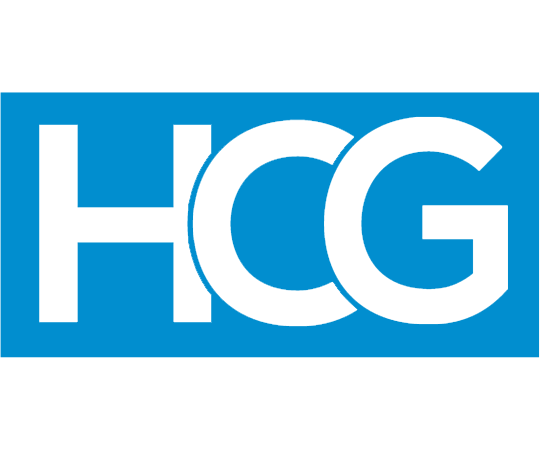
Apr 30 Agility: Leadership’s Future-Forward Frontier
In the rapidly evolving landscape of modern business, leaders find that traditional management skills are no longer sufficient to ensure success in the hybrid workplace era. My executive coaching clients who lead large organizations have struggled against the limitations of many of these learned leadership traits and habits.
The complexities and challenges of today’s global economy demand a more agile approach to leadership that blends strategic foresight with adaptability and innovation with empathy. This article delves into the essential facets of leadership agility: Fostering Creativity and Disruption, Adaptive Thinking, Resilience, Leading Hybrid Teams, Strategic Agility, Emotional Intelligence (EQ), and beyond.
We’ll explain why these skills are crucial for navigating change, how to cultivate them, and the stark consequences of failing to do so. Through this exploration, we aim to provide leaders with the insights and tools they need to thrive in an ever-changing world, fostering environments where creativity, resilience, and connection pave the way for unparalleled success.
1) Foster a Culture of Creativity and Disruption
Innovation is the heartbeat of progress, propelling organizations forward by unlocking new opportunities and ensuring they stay relevant in an ever-changing world. With it, businesses can avoid fading into obsolescence and being overtaken by nimbler, more creative competitors, just like Amazon overwhelmed the brick-and-mortar department store sector.
Strategies for Implementation: Ignite the spark of innovation by creating a playground for ideas within your organization. Encourage wild, out-of-the-box thinking by rewarding risk-taking and celebrating failures as much as successes. One of my CEO clients found great success by encouraging and incentivizing his team to explore uncharted waters, where every new idea is a treasure waiting to be discovered.
The Price of Stagnation: Imagine using a map to search for treasure already found and looted by a competitor. Sticking to the familiar, well-worn path in an age of accelerated innovation is like refusing to acknowledge that the world is round. Failing to innovate isn’t just about missing out on new products or services; it’s about watching your organization slowly fade into obscurity as the world flashes forward, vibrant and buzzing with creative solutions to both old and new problems.
2) Adaptive Thinking
Adaptive thinking allows you to shift strategies and perspectives as circumstances change and challenges mutate and evolve, ensuring the organization remains relevant and competitive.
Strategies for Implementation: Embrace a mindset of curiosity and openness to change among your team members. Lead by example by embracing new ideas and approaches with curiosity and enthusiasm. Prioritize strategic planning flexibility to quickly adapt to changing circumstances. One of my clients had to adapt when, after the first quarter of this year, their 2024 plan needed to take a sharp turn due to unforeseen events. But they had practiced being nimble and flexible, which was a tremendous asset.
The Price of Stagnation: Picture a world that moves fast while you stand still, watching opportunities slip like sand through your fingers. Failing to adapt means you might as well be navigating with an outdated map in a rapidly changing landscape, or treading water as the ocean around you pulls you farther out to sea.
3) Resilience in the Face of Adversity
Resilience enables leaders and their organizations to withstand setbacks and challenges without losing confidence, morale, or momentum. Steve Jobs was removed from his own company. But his resilience empowered him to return stronger than ever.
Action Steps: Are you creating a supportive environment that recognizes effort and learns from failures? Regularly engage in team-building activities that strengthen interpersonal relationships and collective resilience. Another organization I’m working with is having difficulty overcoming a tough year in sales. But I’m teaching the senior team to be resilience by learning from what did not work and tweaking their business model to surge forward and grow their sales and profits.
The Risk of Crumbling Under Pressure: Imagine hitting a bump in the road and losing control instead of steadying the wheel. That’s what it’s like when we can’t bounce back from setbacks. Without resilience, we’re more prone to panic and fall apart – or off a cliff – at the first sign of trouble.
4) Leading Hybrid Teams: Mastering the Hybrid Work Model
The hybrid work model combines the flexibility of remote work with the structure of in-office days, offering a blend of diversity and a unique set of challenges in maintaining communication, culture, momentum, and cohesion. Leading effectively in this environment is crucial to leverage the strengths of variegated work settings and ensure that all team members, regardless of their physical location, feel integrated, valued, and heard. Zapier has found remarkable success by embracing the hybrid work model, allowing its team members to define their optimal work environments and schedules.
Strategies for Implementation: Create an inclusive culture with communication tools and practices that allow equal participation for both remote and in-office team members. Implement regular check-ins and provide a variety of platforms for team interactions to foster a sense of unity. Invest in technology that minimizes the distance between different work environments and promotes collaborative teamwork dynamics. Since most of the organizations I work with are working in a hybrid environment, they are creating a new playbook on how to engage and find new ways to connect and onboard new employees using a new hybrid approach.
The Price of Stagnation: Overlooking the nuances of managing a hybrid team can result in a workforce split between remote and office environments, causing feelings of isolation among remote employees and potential burnout for those in the office. This divide can weaken team unity, stifle innovation, and reduce overall productivity, possibly leading to increased employee turnover and diminished organizational performance. Without engaged leadership, the advantages of the hybrid model risk becoming undermined by disconnect and general discontent.
5) Strategic Agility
Being strategically agile enables you to quickly identify and capitalize on opportunities, positioning the organization for long-term success. Just take a look at how Uber and Lyft have redefined and disrupted the traditional taxi cab business model.
Tactics for Success: Keep a close eye on industry trends and potential disruptors. Foster a culture of agility with rapid prototyping and process development. Actively practice and promote flexible project management methodologies. That allows you to make swift adjustments to solve new challenges and capitalize on emerging opportunities. One of the things I’ve worked with my new C-Suite clients on is having a strategic mindset and the awareness and agility to know what’s happening in their industry to forecast trends and communicate those proactively.
The Consequence of Missing the Wave: Imagine surfing but missing the perfect wave because you started paddling too late. Strategic agility is about anticipating and catching the wave at the perfect moment.
6) Empathy: Cultivate Understanding and Connection
Empathy bridges gaps between people, fostering an environment of trust and open communication. It’s the foundation for strong organizational relationships and is crucial for effective teamwork, leadership, and customer relations. Without empathy, we’re merely ships passing at night, missing the chance to connect and collaborate. Microsoft has prioritized empathy over the years, and its iconic performance reflects that commitment.
Strategies for Implementation: Actively practice active listening, where you focus entirely on what the other person is saying without forming a response in your mind until they have finished speaking. Encourage sharing personal stories and challenges within your team to build deeper connections and understanding. I help support many of my organizations by providing facilitation sessions focused on developing emotional intelligence and actively cultivating empathetic leadership.
The Price of Stagnation: Neglecting empathy in the workplace is like walking in fog; misinterpretations and conflicts arise, eroding the fabric of teamwork and innovation. It leads to a cold, impersonal, transactional environment where creativity and morale dwindle, and talent starts looking for the door.
The cost of not developing leadership agility can be significant, potentially leading to stagnation, decreased competitiveness, and failure to achieve organizational goals. But by mastering these skills, you can better guide your organization through complex changes and challenges, achieve higher results, and ensure long-term success. The time to strengthen and leverage these skills is now!
- About the Author
- Latest Posts
Sarah Hathorn, CEO of Hathorn Consulting Group, is the go-to-expert in working with leaders and companies to create successful corporate DNA. As an executive coach, consultant and speaker she collaborates globally with clients and brands such as Deloitte, McKesson, Kimberly-Clark, Sherwin-Williams, Home Depot and other leading organizations.
Subscribe today to get my newsletter, Corporate DNA™ for leadership articles on how to maximize your talent pipeline, develop & enhance leadership capabilities, inspire and influence to communicate top results and much more.






No Comments